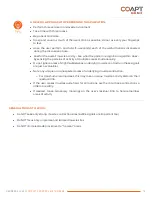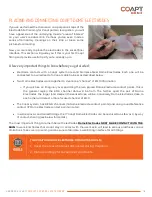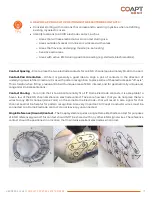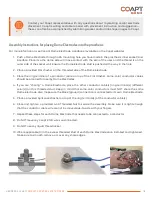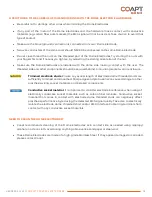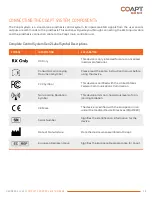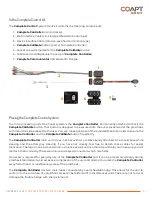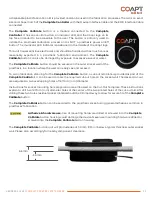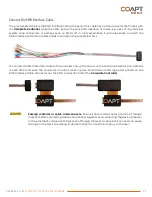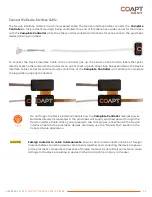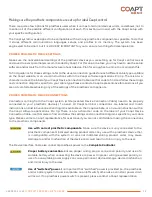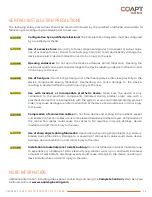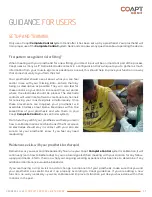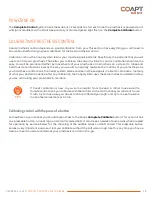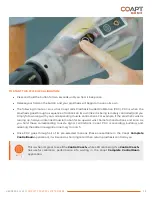
HANDBOOK (V
4.0)
COMPLETE CONTROL SYSTEM GEN2
15
A HELPFUL APPROACH TO PERFORMING THIS PALPATION:
•
Perform this exercise in a relaxed environment
•
Take time with this process.
•
Be patient and listen.
•
Grasp and cover as much of the user’s limb as possible; do not use only your fingertips
to feel.
•
Have the user perform and hold (3-4 seconds) each of the useful motions discovered
during the discussion phase.
•
Feel for the overall muscle activity – like what the pattern recognition algorithm does –
by sensing the patterns of activity at multiple areas simultaneously.
•
Do not ignore areas of slight/subtle/weak underlying muscle contraction (these signals
are just as valuable).
•
Note any unique and unexpected areas of underlying muscle contraction.
o
For transhumeral amputees, this may mean unique muscle activity distal on their
residual limb.
•
If the user tenses muscles quite hard for all motions, ask them to make contractions a
little more softly.
•
If desired, make temporary markings on the user’s residual limb to help remember
areas of activity.
GENERAL THINGS TO AVOID:
•
Do NOT seek only strong muscle contraction sites (subtle signals are important too)
•
Do NOT focus only on precise and isolated muscle sites
•
Do NOT limit electrode placement to “hotspot” areas















